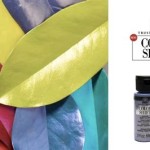```html
Is Red A Hard Color To Paint?
The question of whether red is a difficult color to paint is frequently debated among artists, hobbyists, and even manufacturers of paints. The answer, however, is nuanced and depends on several factors related to the properties of red pigments, their interaction with light, and the specific application for which they are being used. While seemingly straightforward, achieving a vibrant, consistent, and lightfast red can present unique challenges compared to other colors.
The perceived difficulty in painting with red stems from a combination of scientific and artistic considerations. These considerations include the inherent characteristics of common red pigments, the way the human eye perceives red light, the potential for these pigments to fade or shift in color over time (lightfastness), and the technical skills required to properly layer and mix reds to achieve the desired tone and saturation.
Pigment Properties and Light Interaction
One major factor contributing to the reputation of red as a difficult color lies in the properties of red pigments themselves. Historically, red pigments were derived from various sources, including minerals like cinnabar (mercury sulfide), organic sources like insects (cochineal), and plants (madder root). Many of these traditional pigments were known for their instability, toxicity, or poor lightfastness. While modern chemistry has provided a broader range of synthetic red pigments with improved characteristics, some inherent challenges remain.
Many red pigments tend to be more translucent than pigments of other colors, such as blues or greens. This translucency means that red paint requires more layers to achieve complete opacity, especially when applied over a dark or contrasting underpainting. If applied too thinly, the underlying surface will show through, resulting in a weaker, less saturated red. This requirement for multiple layers can make it more time-consuming and technically demanding to create a solid, even field of red color.
Furthermore, the way red pigments interact with light affects their perceived color and vibrancy. Red light has a long wavelength and lower energy compared to other colors in the visible spectrum. This means that red pigments absorb more of the other wavelengths and reflect the red wavelength back to the eye. The specific chemical composition and particle size of the pigment determine the exact shade and intensity of the reflected red light. Differences in these factors can lead to subtle variations in the appearance of red, making it difficult to achieve consistent color matching and mixing.
Lightfastness and Color Permanence
Another significant consideration is the lightfastness of red pigments. Lightfastness refers to a pigment's ability to resist fading or changing color when exposed to light over time. Certain red pigments, particularly those derived from organic sources, are notoriously prone to fading, especially when exposed to direct sunlight or ultraviolet radiation. This fading can lead to a noticeable shift in the color of the painting, diminishing its vibrancy and overall aesthetic appeal.
Even some modern synthetic red pigments can exhibit varying degrees of lightfastness. Alizarin crimson, for example, a popular and historically significant red pigment, is known to be susceptible to fading, despite being a synthetic organic pigment. Quinacridone reds generally offer better lightfastness, but even within this category, there can be variations depending on the specific formulation and manufacturer.
The choice of pigment binder also plays a crucial role in lightfastness. Oil paints, acrylics, and watercolors all have different binders that affect the pigment's stability and resistance to environmental factors. Oil paints, generally considered to be more durable, can still be affected by factors such as the acidity of the oil or the presence of impurities. Acrylics, while generally more lightfast than watercolors, can be susceptible to degradation from ultraviolet light if not properly formulated.
To mitigate the risk of fading, artists must carefully select lightfast red pigments and use them in conjunction with appropriate painting mediums and varnishes. Varnishes can provide a protective layer that shields the pigment from ultraviolet radiation and other environmental factors. However, even with these precautions, the long-term color stability of certain red pigments remains a concern.
Mixing and Color Theory Considerations
Achieving specific shades and tones of red also presents challenges in terms of color mixing. Red is a primary color, meaning that it cannot be created by mixing other colors. However, different red pigments have different undertones and characteristics that affect their mixing behavior. For example, some reds lean towards orange (warmer reds), while others lean towards blue (cooler reds). These subtle differences can significantly impact the final color achieved when mixing red with other colors.
When mixing red with white, for instance, the result may not always be a pure, bright pink. Depending on the specific red pigment used, the resulting pink may appear dull or chalky. This is because some red pigments contain a slight amount of yellow or brown, which can contaminate the pink tone. To achieve a clean, vibrant pink, artists often need to use a cool red pigment that leans towards blue or add a touch of blue or violet to counteract the yellow undertones.
Similarly, mixing red with green or blue can be tricky, as these combinations can easily result in muddy or brown colors. Green and red are complementary colors, meaning that they are opposite each other on the color wheel. When mixed together, they tend to neutralize each other, resulting in a dull, grayish-brown hue. To prevent this, artists need to carefully control the proportions of red and green and use these mixtures sparingly, especially in areas where vibrant color is desired.
The human eye's sensitivity to red also contributes to the perceived difficulty in painting with red. Red is a highly saturated color that can easily overpower other colors in a composition. It can also create a sense of visual tension or excitement. To effectively use red in a painting, artists need to understand how it interacts with other colors and how it affects the viewer's perception of the overall composition. Overuse of red can lead to a painting that feels chaotic or overwhelming, while underuse of red can result in a painting that lacks impact.
Therefore, mastering the use of red requires a deep understanding of color theory, pigment properties, and painting techniques. It involves carefully selecting the right pigments, understanding their mixing behavior, and controlling the proportions of red in relation to other colors. It also requires an awareness of the human eye's sensitivity to red and its potential impact on the overall composition.
```
What Paint To Use Averill Mountain Crafts

Black And White Aren T Colors School Of Atelier Arts

How Hard It Is To Paint This Color Your Own Car Auto Discussion Forum S Auto101 Com
Red Paint Poll Need Some Help Mustang Forums At Stangnet

Review Too Much White Paper Page 2
Candy Apple Red Aerosol Paint 3 5oz Can
Red Paint Poll Need Some Help Mustang Forums At Stangnet

Michael Harding Oil Paint 40ml Crimson Lake

Rust Oleum V2164838 15 Oz Enamel Spray Paint Red Case Of 6 Broe

How To Choose A Paint Color Wildfire Interiors
Related Posts








